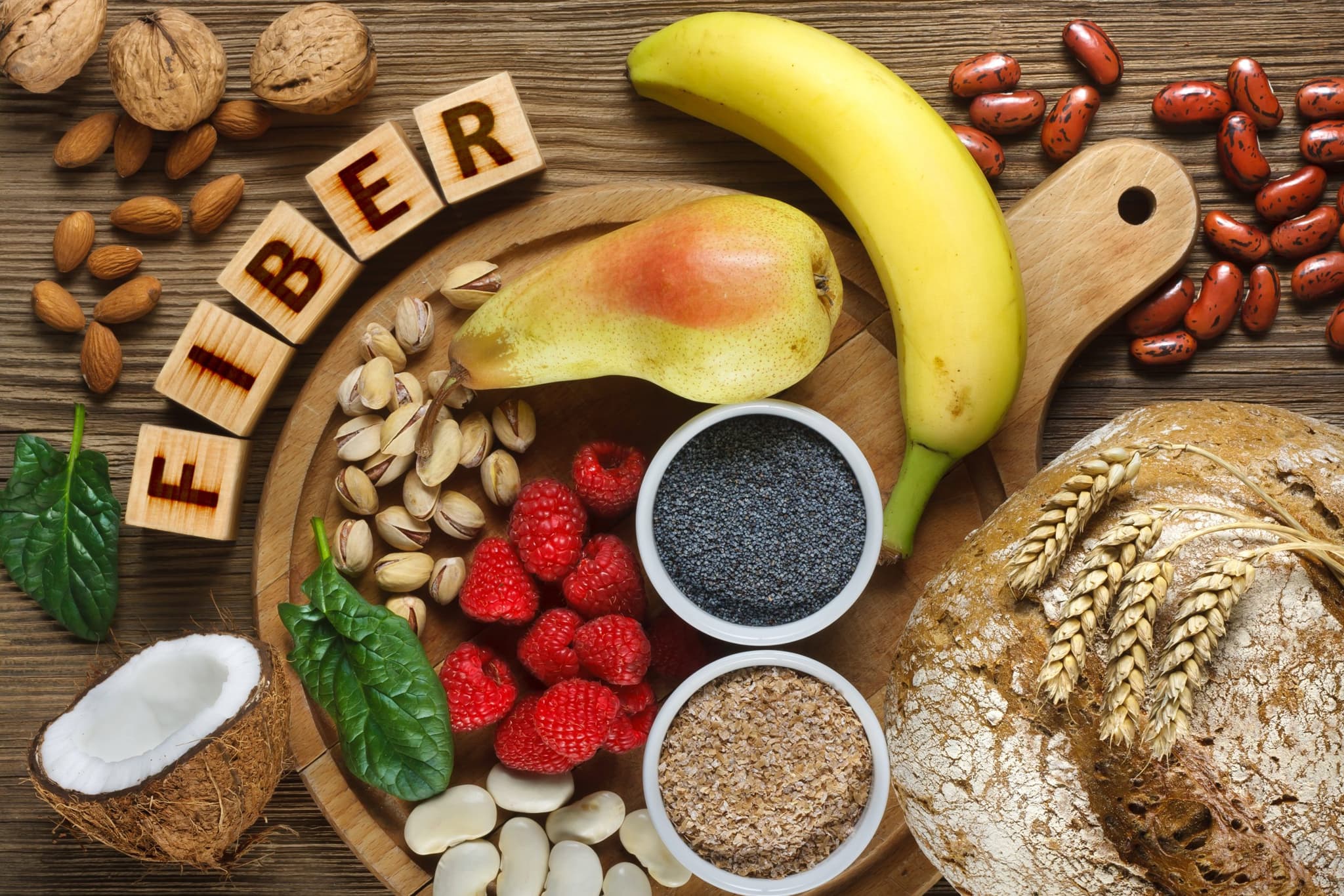
2025-08-12T11:38:49
Health Benefits of Fiber
- Family Medicine
- Gastroenterology
- Internal Medicine
- Weight Management
February 10, 2017 | Gastroenterology
Specialties:Gastroenterology

The body needs nutrients to support its various organs and functions, and the main way it gets those nutrients is through food and drink. What we put in our bodies determines what nutrients our bodies will receive. From the protein we need for strong bones to the carbohydrates we need for energy—everything must first pass through our digestive system.
Our digestive system is responsible for converting food and drink into nutrients, energy and waste. The digestive system is huge—it starts with our mouth and extends through our abdomen to our colon where waste ultimately leaves the body.
As food travels through our digestive system, there are several different processes taking place that help our bodies absorb and distribute nutrients and eliminate what our body doesn’t need.
The digestive system starts at the mouth where food enters and immediately begins the early stages of digestion. In fact, the process starts even before our first actual bites. When we get hungry—and especially right before eating—our mouths produce saliva. Saliva contains special proteins called enzymes that start the digestive process the second you start chewing.
As food enters our mouths and as we start chewing, more saliva is released to break down food. The goal is to make the next few digestion steps as simply as possible. A tip for good digestion–chew your food as much as you can with every bite to ease the burden on your digestive system.
The throat is broken up into the pharynx and the esophagus. The pharynx is the next place food goes after it leaves the mouth.
The pharynx is where swallowing occurs. As food enters the pharynx, the tongue combines with the roof of the mouth (also called the soft palate) to push food back into the pharynx. At this point, the pharynx partially closes to make sure food doesn’t accidentally go down your windpipe (trachea) and into the lungs. Next, food heads to the esophagus.
The esophagus is the area between the pharynx and the stomach. It uses muscular contractions to help push food through and into the stomach but not before it passes through what’s called the lower esophageal sphincter. The lower esophageal sphincter is an important area that opens to allow food into our stomachs but closes to keep stomach acids and other chemicals inside the stomach where they belong. Heartburn and several of the conditions that cause heartburn occur when the lower esophageal sphincter isn’t working the right way.
The stomach uses acids and various enzymes to break down food, eventually turning it into a liquid or pasty substance. As this liquid moves from the stomach to the small intestine, any solids that were left over are pushed through the rest of the intestines and eventually leave the body.
The small intestine continues breaking down food to usable nutrients and focuses on absorbing those nutrients. Nutrients predominantly enter our bodies as they are absorbed through the wall of the small intestine and into our bloodstream. The waste that’s left over then moves into the large intestine which is also called the colon.
The colon is an organ that connects to the small intestine. Its job is to absorb water and take the part of what we eat that our body can’t use—waste—and remove it from the body through defecation. Waste products begin as liquids, but in a healthy colon the water part of waste is absorbed and used and the solid part of the waste remains.
Solids stay in the colon until the body until our bodies have removed the last bit of usable water and energy. Bacteria work throughout our colon to process and protect against negative bacteria.
When food has converted to waste and gone through the colon (a process which usually takes about two to three days), it waits to be removed through the rectum. The rectum is a chamber that holds waste and signals our bodies that stool is ready to be released from the body. It holds waste until our brains and our colons work together to expel that waste. This sensation we feel when we need to use the bathroom is our rectums and brains telling us that we need to use the restroom.
There are three other organs that are attached to our small intestine that are also key to digestion.
The digestive system is complex, and problems in any one of its different areas can create complications. If you think you have a problem with your digestive system, or if you frequently have pain or trouble with bowel movements, speak to your doctor or healthcare provider for further assistance.
I grew up in Utah County and graduated from Brigham Young University. I received my medical degree from the University of Virginia, and I finished my residency in internal medicine at the University of Utah where I also served as chief medical resident. As a doctor, I recognize the tremendous trust my patients place in me, and I do my best to help them understand not only their medical issues but also the plan—the how and why—behind helping them feel better. I love the challenge posed by all gastrointestinal disorders but especially enjoy the challenges and intricacies of Crohn’s disease and Ulcerative Colitis.
“The Digestive System.” WebMD. http://www.webmd.com/digestive-disorders/digestive-system#1
“Your Digestive System and How It Works.” National Institute of Diabetes and Digestive and Kidney Diseases. https://www.niddk.nih.gov/health-information/health-topics/Anatomy/your-digestive-system/Pages/anatomy.aspx
WRITTEN BY:
The Live Better Team

2025-08-12T11:38:49

2023-03-27T14:47:45

2021-09-02T11:02:37

2018-02-28T12:25:41
This information is not intended to replace the advice of a medical professional. You should always consult your doctor before making decisions about your health.